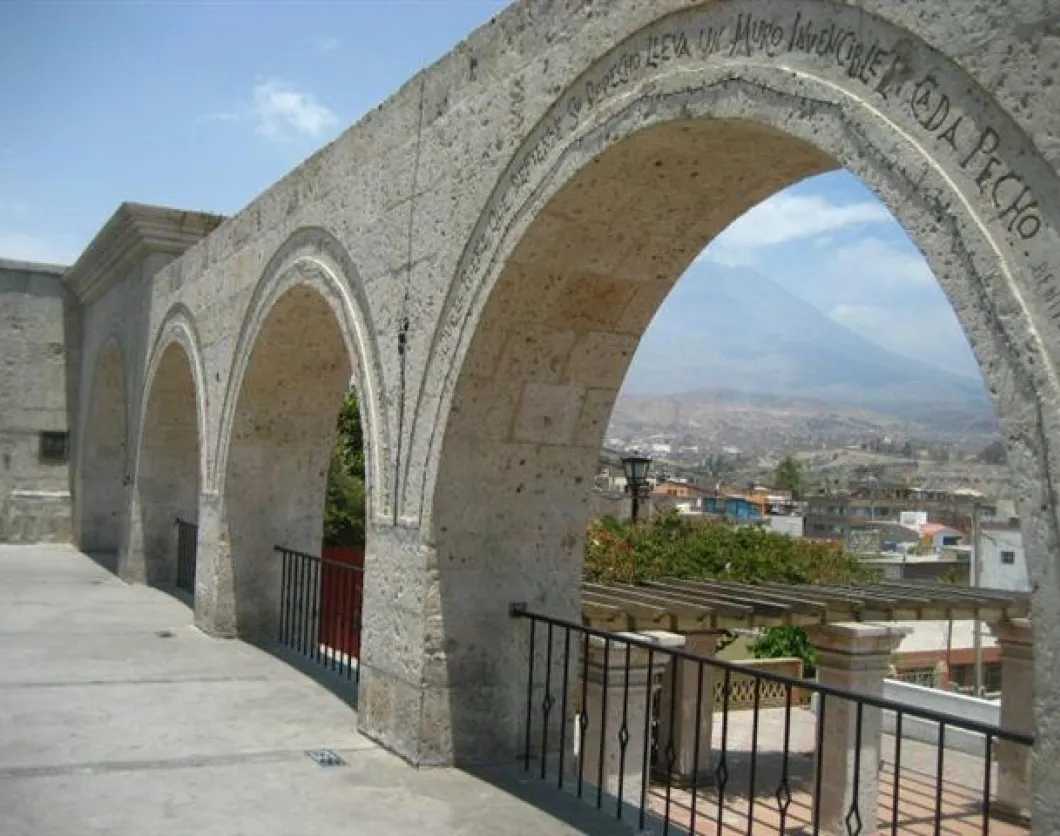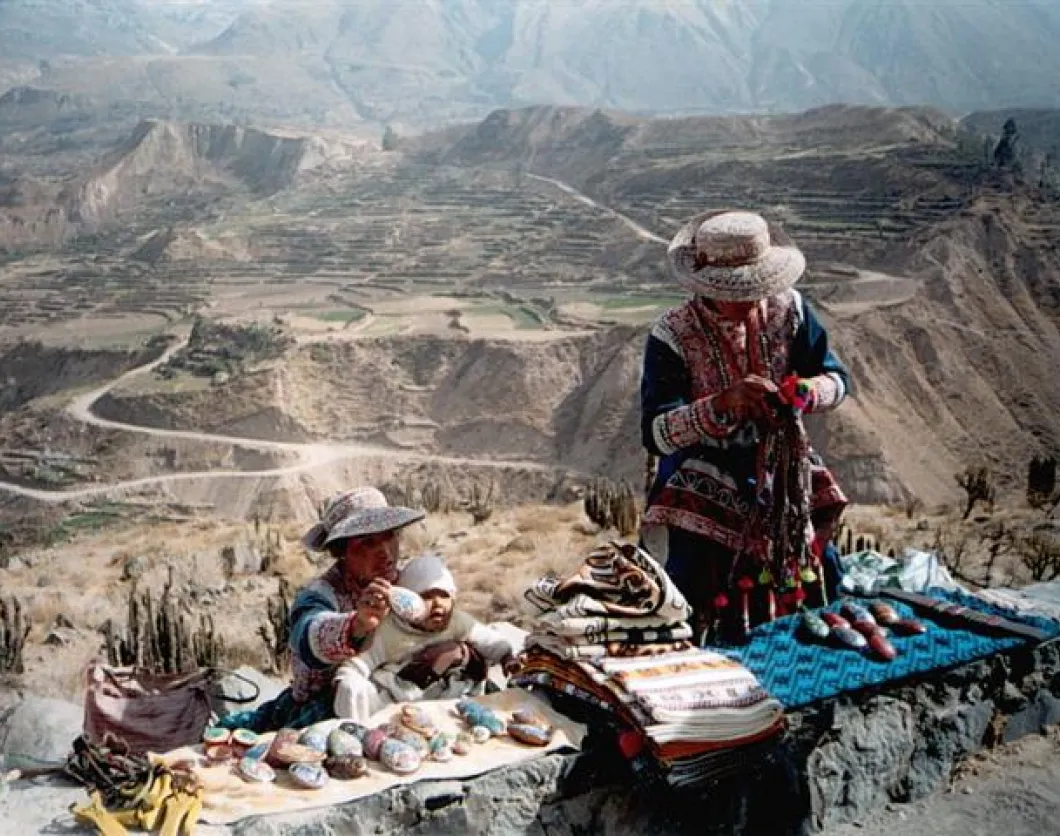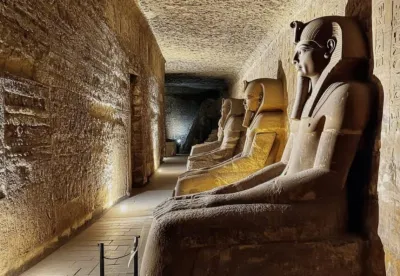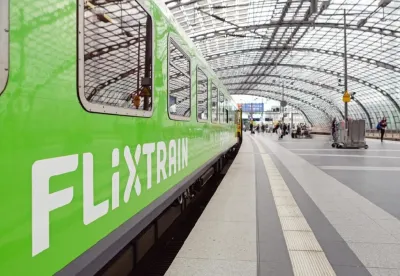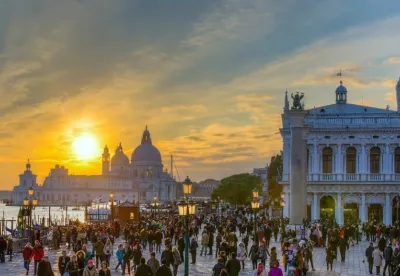The Misti volcano may be dormant, but the city of Arequipa recognized by UNESCO wakens every morning amidst a flurry of activity. And although the summit of the volcano is often wreathed by small clouds of smoke, the Arequipa townsfolk proud of their land, do not fail to invite visitors to stroll through the streets of white stone and traditional squares. The lordly city of Arequipa owes the characteristic hue of its houses and other constructions to the white sillar stone.
Historical City
Founded as the Villa Hermosa de Nuestra Señora de Asunta (the Beautiful Villa of Our Lady of Asunta), Arequipa was recognized as a city in 1541. Throughout its history, Arequipa has also been the cradle of leading thinkers and politicians. Today, the visitor can take in the spectacular neo-Reanissance Cathedral, the impressive Santa Catalina Convent and colonial mansions and museums, all of which are reason enough to visit the city.
In the outskirts of the city one can find many other attractions. The Colca Canyon is without a doubt the best-known both in Peru and abroad. Just four hours northeast of the city, the Colca boasts some of the most breath-taking landscapes in Peru: superb terracing, snow-capped peaks, dizzying canyons and towns dating back to the sixteenth century.
There are 14 villages that have been preserved in the valley since those early colonial times, which the Spaniards used to settle the ancient Collagua and Cabana tribes, who had previously been scattered around the region. The visitors to the Colca Canyon will surely be fascinated by the narrow streets and richly decorated churches. The Colca is also a haven for adventure sports fans.
Other sites include the ancient Toro Muerto rock paintings, the Imata natural stone formations and the Cotahuasi Canyon, believed to be the world’s deepest. What truly unites the different parts of Arequipa is without a doubt its exquisite cuisine. Visitors should not fail to try the local rocoto relleno (stuffed hot chili pepper), adobo (marinated roast beef) and the spicy chupe stews, which are simply irresistible.
Peaks in Arequipa
The region of Arequipa is synonymous with volcanoes and snow-capped peaks, clear blue skies and endless plains. The region lies on the western slopes of the Andes, and is the jumping-off point for a series of climbs of varying difficulty, which stand out for their rare combination of beautiful landscapes, easy access and their ancient cultural heritage.
The Misti volcano 5,825 meters (19106 feet) is the symbol of the city of Arequipa. The route up to the top is more of a hike than a climb, and takes two days up steep through the slopes. The most popular of the ascents starts out from the city and continues up to Tambo Inca and the base camp of Nido de Aguilas. Hikers will reach the summit on the second day. Chachani 6,075 meters (19,926 feet), the other volcano overlooking the city, can be climbed taking a spectacular trail that climbs up from Pampa de Arrieros.
The Colca Canyon also features several imposing mountains which are popular amongst climbers The Ampato 6,288 meters (20,624 feet) and Sabancaya 5,976 meters (19,601 feet) volcanos and Mount Hualca Hualca 6,025 meters (19,762 feet) are some of the highest.
The Cotahuasi Valley features Mount Coropuna 6,425 meters (21,074 feet), its most beautiful peak, giving climbers superb views of the region. The valley is reached from Lake Pallarcocha, just a two-day drive from Arequipa.
The Colca Canyon
Located in the region of Arequipa, the Colca Canyon covers a series of beautiful trekking circuits which have been recently discovered for adventure tourism. The area features a network of practically endless trails that wind through the mountains, linking lovely colonial villages.
The area is also studded with beautiful lakes, bizarre stone formations formed by wind erosion and unique flora and fauna such as Andean condors, vicuñas, queñual forests and clumps of yareta plants.
The main attraction of the area is without a doubt the chain of snow-capped volcanoes, some of which are active. Mount Hualca Hualca 6,025 meters (19,762 feet), Sabancaya 5,976 meters (19,601 feet) and Ampato 6,288 meters (20,624 feet), among others.
Since time immemorial, the Colca has been home to the Collagua and Cabana tribes, descendants of the Pucará people of the southern highland plains and from the Quechua people of Cuzco, who proved to be skillful hydraulic engineers and master builders.
One of the most popular trekking routes in the Colca is the trail that links the town of Cabanaconde and Tapay in a circuit that takes two to three days and gives hikers views of impressive landscapes, Cabana towns such as Cosnihua and Malata, and many pre-Hispanic ruins.


